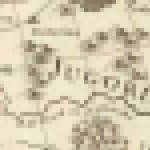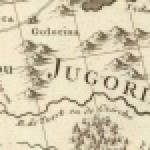|
Artemy Lebedev
§ 71. Death of pixel graphicsJune 25, 2001 |
|
Screen resolution is the same as scale in cartography. No matter how detailed the image is, when resolution grows—say from 640×480 to 1024×768—the amount of graphical information gets a boost, too, while petty details become less distinct. The same holds for scale: on a globe, there’s no Paris, Ill. |
|
Screen resolution (as it is now):
|
|
A map is one thing, a blueprint is quite another. It may have a scale of 1:1. And that’s where a big shortcoming of an image on a computer screen (or a TV picture) is revealed. Today you can’t display a cigarette pack in life size on a monitor screen. But you can do that on paper—at any print resolution. |
|
Graphic resolution on screen (as it should be):
|
|
The growth of resolution should not affect size. The resolution of an image must be a parameter of quality in the first place (and that of size in the second). That’s the problem they are struggling to solve in Windows when the font size is made dependent on the projected resolution. |
|
Bitmap graphics consist of a certain number of pixels, and higher resolution should primarily translate into the larger size of files in kilobytes. But bitmap graphics feel good, since they don’t care for resolution: they look fine at any. It means that pretty soon all pictograms, cursors, navigation elements, fonts and illustrations will adjust to the current screen resolution. All that can be vectorized will be vectorized. As for bitmap graphics, the parameter resolution will have a true meaning: it will denote the reserve of quality of an image depending on its physical size—in horizontal and vertical terms. |
|
Housekeeping tip |
In the specification sheet of GIF format there’s no resolution. There’s just an option of indicating the proportions of a pixel. Back then (1987) they thought of pixels with a side ratio of 1:4 but failed to give thought to resolution for a linear measure of distance. |
|
Low resolution is nothing to write home about, and it’s doomed to be ousted by high resolution. Letters on a knit sweater are inferior in terms of quality to silk-screen printing. A laser printer is better than a dot matrix one. If you tolerate letters on a mobile phone screen, it’s only because there’s no substitute yet. |
|
|
|
Pixel graphics will become extinct because at high screen resolution one pixel will be too small to be discerned. Pixelated images will be resorted to as often as tile mosaic. |
|
Housekeeping tip |
Today giving the font size in pixels (which is acceptable in CSS) is still mauvais ton. |
|
If the reader is not confused by pixels, points, logical and physical distance measures, he is advised to check out section 81 where we talk about the origin of a typographical point. |
|
|
|




